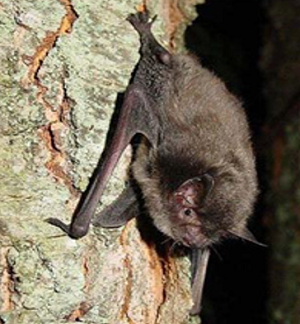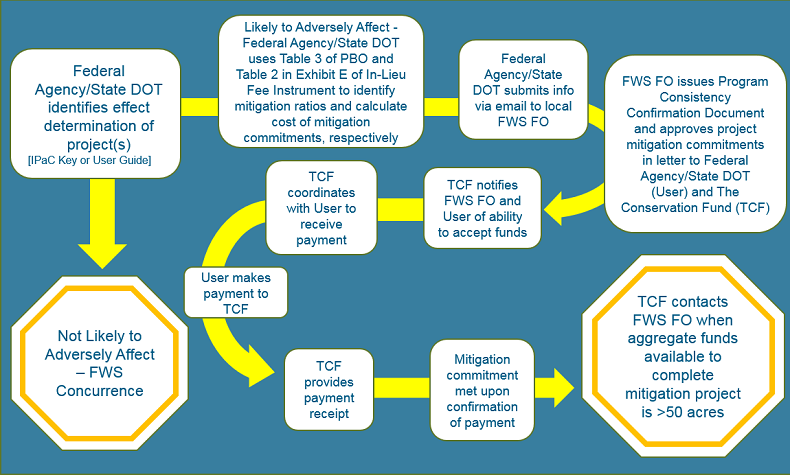
Updates to the Indiana Bat and Northern Long-Eared Bat Programmatic Consultation Accelerate Project Delivery and Improve Mitigation Outcomes
Numerous infrastructure projects have the potential to impact endangered and threatened species and their habitat. In May 2016, the Federal Highway Administration (FHWA), Federal Railroad Administration (FRA), Federal Transit Authority (FTA), and the U.S. Fish and Wildlife Service (FWS) finalized the rangewide programmatic biological opinion (PBO) for the Indiana bat and northern long-eared bat (NLEB). This PBO included a standardized, landscape-level conservation strategy encompassing the geographic ranges of both bat species and providing transparency and predictability to FHWA and State Departments of Transportation (DOTs).
In February 2018, the FWS and FHWA issued a second revised version of the PBO and supplemental documents. The revisions are based on input collected over the past year by the Programmatic Consultation Working Group, which consists of staff from FWS and FHWA. The changes to the PBO address specific topics and clarify the consultation process. In addition to the updates to the PBO, significant updates have been made to the Information for Planning and Consultation (IPaC) Assisted Determination Key, an online tool to streamline the consultation process. A rangewide In-Lieu Fee (ILF) Program Instrument with The Conservation Fund (TCF) has also been established as an approved compensatory mitigation option for projects that are “Likely to Adversely Affect” (LAA) Indiana bats. This issue of Successes in Stewardship will highlight some of the updates to the PBO and IPaC Assisted Determination Key, in addition to exploring the ILF Program Instrument.
Original Programmatic Consultation Reduced Workload and Ensured Interagency Coordination

An Indiana bat on a roost tree (Image courtesy of FWS).
Indiana bat (a federally endangered species) and NLEB (a federally threatened species) populations have experienced dramatic declines due to habitat loss and the effects of white-nose syndrome. Transportation agencies that receive federal funding for their projects are required by Section 7(a)(2) of the Endangered Species Act (ESA) to consult with FWS to ensure their actions are not likely to jeopardize these bats or destroy or adversely modify critical habitat. With the Indiana bat and NLEB species covering 22 and 37 States, respectively, the sheer size of the species’ ranges means that a large number of transportation projects have the potential to benefit from a programmatic approach to ESA Section 7(a)(2) consultations.
This rangewide programmatic consultation is one of the largest of its kind. Development of the programmatic consultation and associated conservation strategy was a complex, multi-year effort involving a team that included three Federal transportation agencies, FWS staff from Headquarters, and six offices in five regions. The process required the establishment of a multidisciplinary Working Group, timely completion of a number of high-profile deliverables, and regular outreach to FHWA Division Offices, State DOTs, and FWS Field Offices (FOs) in 38 States (for more information on the rangewide programmatic consultation and its benefits, see the September 2016 issue of Successes in Stewardship). The Programmatic Informal Consultation was completed with the goal of accelerating the environmental review process, improving conservation for the bats, standardizing the assessment of impacts across the range, and reducing the workload on FHWA, FWS, and State DOT staff. In less than two years (as of July 2017), over 1,900 projects across 28 States used the rangewide programmatic consultation. As a result, timeframes for formal consultations have been reduced from approximately 135 days to 30 days and informal consultations to as few as 15 days.
For an overview of the Section 7 consultation process, see the October 2017 issue of Successes in Stewardship.
Updates Address User Needs and Expand Functionality of Programmatic Consultation
After receiving feedback and input from FWS FOs, State DOTs, and FHWA Division Offices over the past year, the Working Group made changes to address specific issues that arose and to further clarify the PBO in order to make implementation more efficient. Team members worked on these revisions for the past six months, and updated the supporting implementation documents accordingly, including the IPaC Assisted Determination Key.
Document Revisions Clarify Scope, Effects Analysis, and More
Revisions to the PBO were minor and facilitate a more efficient implementation. Revisions include clarifying the scope of the programmatic consultation, Avoidance and Minimization Measures (AMMs), and the effects analysis for certain activities, as well as adding clarifying footnotes where needed. Changes in the PBO were translated into the supporting implementation documents; namely, the User Guide, Appendix B Project Submittal Form, Appendix C AMMs, Appendix E Post Assessment Discovery of Bats Form, and the LAA FWS Response Letter Template. The revised versions of the PBO and supporting implementation documents can be found on the FWS Region 3 website.
New IPaC Capabilities Save Personnel Time and Effort
The upfront analysis conducted as part of the programmatic consultation process has been compiled into an IPaC Assisted Determination Key, which is a simple, online interview process that allows agencies to arrive at a recommended determination. The IPaC Assisted Determination Key has been significantly updated to address the PBO revisions and ensure a streamlined, step-by-step consultation. For example, a new functionality enables users to modify and re-issue Effects Determination Letters after their initial generation. The IPaC Assisted Determination Key is available here.
ILF Program Instrument Provides Practical Option for Implementing High-Quality Compensatory Mitigation
A rangewide ILF Program Instrument was established with TCF in July 2017 and can be used as a mitigation option for projects that are LAA Indiana bats. The ILF Program Instrument provides a practical option for transportation agencies to address their responsibilities under ESA Section 7(a)(2) and implement compensatory mitigation for unavoidable impacts to the Indiana bat, provided the impacts are caused by transportation projects or other actions and that the projects are consistent with the PBO.
After a transportation agency identifies the effects determination of a project as LAA, they submit information to the FWS FOs using the PBO and supporting implementation documents to identify the mitigation ratios and calculate the cost of mitigation commitments. Once approved by the FWS, TCF is notified and coordinates with the transportation agency to receive payment. The mitigation commitment for the transportation agency is met upon confirmation of payment. TCF will then contact the FWS FO when aggregate funds received are sufficient to complete a mitigation project over 50 acres. The ILF Program Instrument requires TCF to implement mitigation projects within three years of receipt of aggregate funds for mitigation projects over 50 acres. The main goal of the ILF Program Instrument is to implement the highest priority conservation actions, where practicable. The figure below provides an overview of this workflow.

Workflow detailing the implementation of the ILF Program Instrument for compensatory mitigation on LAA projects with unavoidable impacts to the Indiana bat
(Image courtesy of FWS and TCF).
Mitigation projects conducted as part of ILF Program Instrument must include a Project Development Plan, which outlines the goals and objectives of the project, the budget and schedule, baseline site information, performance criteria, and a long-term management plan, among other information. Annual reports and regular program reviews will assess the effectiveness of the ILF Program.
Rangewide Programmatic Consultation Accelerates Project Delivery while Improving Environmental Outcomes for Listed Bat Species
The PBO and subsequent revisions help accelerate the consultation process related to transportation projects and provide a consistent approach to conservation for the Indiana bat and NLEB species. The recent updates respond to practitioners’ needs to make the programmatic consultation process more straightforward and streamlined. Additionally, the new functionalities of the IPaC Assisted Determination Key and the introduction of the rangewide ILF Program Instrument provide more resources and options for transportation agencies to accelerate the delivery of transportation projects, while reducing the impact to endangered and threatened species and their habitat.
Successes in Stewardship is a Federal Highway Administration newsletter highlighting current environmental streamlining and stewardship practices from around the country. Click here to subscribe, or call (617) 494-2013 for more information.

